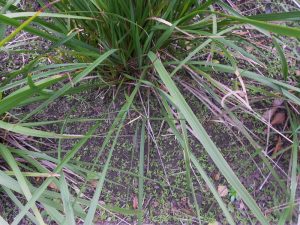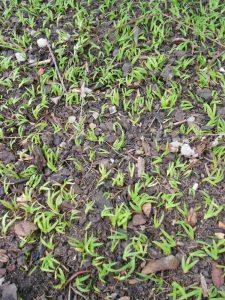Libertia sessiliflora, collected in Chile and obviously enjoying our climate. The soil surface beneath the colony of mature plants is awash with germinated seedlings from the parent plants. This plant has the potential to become an invasive alien, the prolific seed production and germination rate as seen in the attached images have the ability to procreate exponentially.
The Scottish Government has set up a working group to promote the conservation of biodiversity within our native flora and fauna. Legislation will be enacted to strengthen the case for control of alien species that pose a threat to our native flora.
At present this is governed by The Wildlife and Countryside Act 1981; amended by the Wildlife and Natural Environment (Scotland) Act 2011. The “WANE” Bill makes it an offence to sell any invasive plant or animal on lists prepared by Scottish Ministers.
Many non native species are now considered invasive and are appearing on lists which then prohibit their sale or planting in areas where they would pose a threat to native vegetation. This is often due to their thug like characteristics; think of the swathes of Rhododendron ponticum that cover hillsides and estates. Plants that invade water courses are a particular area of concern; Hydrocotyle ranunculoides is a non native invasive species which is a problem in this type of habitat.
Keeping things in perspective; our garden flora would be the poorer without the diverse range of plants collected worldwide, thriving in the temperate maritime climate and now populating our gardens with an array of colour, form and function.



Ann levitt
I have 3 of these in my garden how do I get rid of/ kill them.tgeres a lot of them growing in other gardens locally too